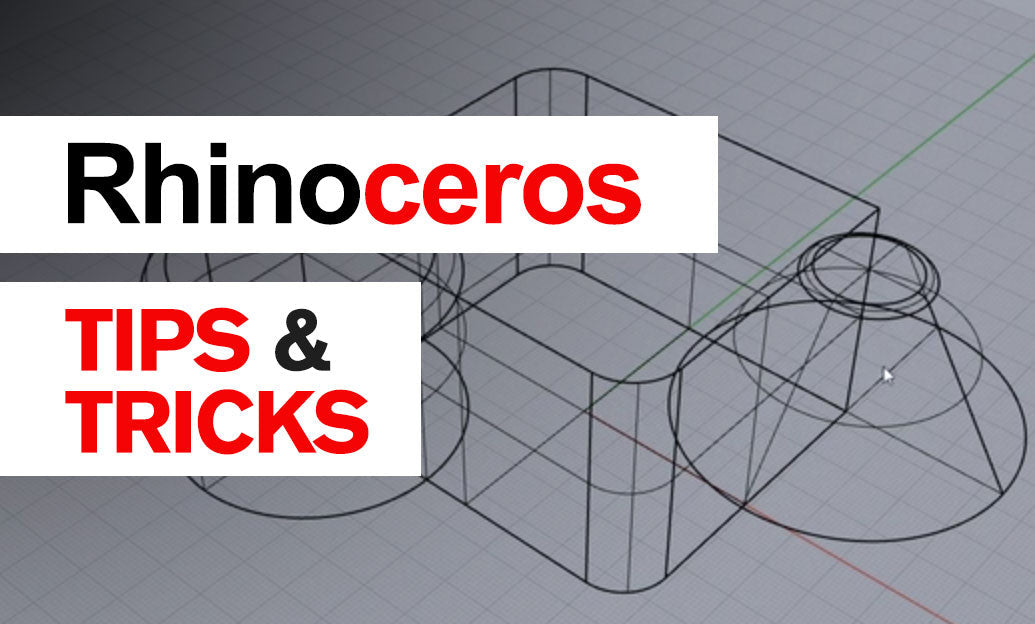Your Cart is Empty
Customer Testimonials
-
"Great customer service. The folks at Novedge were super helpful in navigating a somewhat complicated order including software upgrades and serial numbers in various stages of inactivity. They were friendly and helpful throughout the process.."
Ruben Ruckmark
"Quick & very helpful. We have been using Novedge for years and are very happy with their quick service when we need to make a purchase and excellent support resolving any issues."
Will Woodson
"Scott is the best. He reminds me about subscriptions dates, guides me in the correct direction for updates. He always responds promptly to me. He is literally the reason I continue to work with Novedge and will do so in the future."
Edward Mchugh
"Calvin Lok is “the man”. After my purchase of Sketchup 2021, he called me and provided step-by-step instructions to ease me through difficulties I was having with the setup of my new software."
Mike Borzage
Design Software History: Digital Prototyping Evolution: From Manual Models to AI-Driven Design and Cloud Collaboration
September 02, 2024 7 min read


The Genesis and Evolution of Digital Prototyping
Early Days of Prototyping
Before the advent of digital prototyping, **manual prototyping methods** were the cornerstone of product development. Engineers and designers relied heavily on physical models made from materials like clay, wood, and metal to visualize and test their ideas. These manual processes were not only labor-intensive but also time-consuming and fraught with limitations. Adjustments to the design required significant rework, which often led to extended development cycles and increased costs.
Additionally, manual prototyping faced significant **challenges and limitations** in terms of accuracy and repeatability. The reliance on human craftsmanship meant that no two prototypes were exactly alike, making it difficult to achieve the precision required for complex engineering projects. Furthermore, the lack of advanced analytical tools made it challenging to predict how materials and structures would behave under different conditions, often leading to costly and time-consuming trial-and-error approaches.
Advent of Digital Prototyping
The landscape of product development began to change dramatically with the **introduction of CAD (Computer-Aided Design) software in the 1960s and 70s**. This technological shift marked the beginning of digital prototyping, which allowed designers to create detailed digital models of their products that could be easily manipulated and tested in a virtual environment.
Two key pioneers in the field of CAD were **Ivan Sutherland** and **Patrick Hanratty**. Ivan Sutherland, often referred to as the father of computer graphics, developed Sketchpad in 1963, which is considered the first computer-aided design program. Sketchpad introduced revolutionary concepts such as object-oriented graphics and constraints, laying the groundwork for modern CAD software.
Patrick Hanratty, another pivotal figure, is credited with developing the first commercial numerical control programming system in 1957 and later creating the foundational software for CAD/CAM systems. His contributions were instrumental in transitioning from manual drafting techniques to digital design and manufacturing processes.
The evolution from **2D to 3D digital models** further revolutionized the field. Initially, CAD software focused on 2D drafting, which mirrored traditional paper-based drafting methods. However, the development of 3D modeling capabilities allowed designers to create more detailed and accurate representations of their products, enabling better visualization and analysis. This shift significantly enhanced the ability to design complex products and systems, paving the way for advancements in various industries.
Core Technologies and Methodologies
Key Technologies in Digital Prototyping
The development of digital prototyping has been driven by several **key technologies**, each contributing to the enhancement of the product development process.
- **CAD/CAM Systems**: Software such as **AutoCAD**, **CATIA**, and **SolidWorks** have become foundational tools for engineers and designers. CAD (Computer-Aided Design) allows for the creation of detailed digital models, while CAM (Computer-Aided Manufacturing) enables the programming of manufacturing processes directly from the CAD models. These systems have significantly streamlined the transition from design to production.
- **CAE Integration**: The integration of Computer-Aided Engineering (CAE) tools, such as Finite Element Analysis (FEA) and Computational Fluid Dynamics (CFD), has further enhanced the capabilities of digital prototyping. FEA allows for the simulation of physical phenomena such as stress, heat transfer, and vibrations, while CFD enables the analysis of fluid flow and thermal interactions. These tools provide valuable insights into the performance of designs under various conditions, reducing the need for physical testing.
- **Rapid Prototyping and Additive Manufacturing**: Innovations in rapid prototyping and additive manufacturing have revolutionized the way prototypes are created. Technologies such as **Stereolithography (SLA)**, invented by **Charles Hull**, and **Selective Laser Sintering (SLS)** have enabled the production of highly detailed and accurate physical models directly from digital designs. These techniques have significantly reduced the time and cost associated with traditional prototyping methods.
Methodological Shifts
The evolution of digital prototyping has also been accompanied by significant **methodological shifts** in the way products are designed and developed.
**Parametric and feature-based modeling** has become a standard approach in modern CAD systems. This methodology allows designers to define relationships and dependencies between different elements of a model, enabling automatic updates and adjustments when changes are made. This not only improves design efficiency but also ensures consistency and accuracy throughout the development process.
The rise of **simulation-driven design** has further transformed the product development landscape. By integrating simulation tools into the early stages of design, engineers can evaluate the performance and behavior of a product under various conditions, allowing for informed decision-making and optimization. This approach minimizes the reliance on physical testing and accelerates the development cycle.
Additionally, the adoption of **iterative and agile development processes** has gained prominence in recent years. These methodologies emphasize continuous improvement and flexibility, allowing teams to respond to changes and feedback more effectively. By breaking down the development process into smaller, manageable iterations, designers can quickly identify and address issues, leading to faster and more efficient product development.
Industry-Specific Applications
Aerospace and Automotive Industries
The aerospace and automotive industries have been at the forefront of leveraging digital prototyping technologies to enhance their design and manufacturing processes.
The use of **CATIA** and **Siemens NX** has been instrumental in the development of aircraft and automobiles. CATIA, developed by Dassault Systèmes, is renowned for its advanced 3D modeling capabilities and comprehensive suite of design, engineering, and manufacturing tools. Siemens NX, on the other hand, offers a robust platform for integrated CAD, CAM, and CAE, enabling seamless collaboration and innovation.
In the aerospace sector, these tools have been pivotal in the design and development of cutting-edge aircraft, ensuring precise engineering and efficient production. Similarly, in the automotive industry, digital prototyping has enabled the creation of complex vehicle designs, from initial concept to final production, with a high degree of accuracy and efficiency.
Consumer Electronics and Medical Devices
The consumer electronics and medical device industries have also greatly benefited from digital prototyping technologies, particularly software like **SolidWorks** and **PTC Creo**.
SolidWorks, developed by Dassault Systèmes, is widely used for its intuitive interface and powerful modeling capabilities, making it a popular choice among designers in these industries. PTC Creo, known for its parametric and direct modeling features, provides a comprehensive platform for product development, from conceptual design to detailed engineering.
In the consumer electronics sector, digital prototyping has played a crucial role in the development of innovative products, ensuring precision and functionality. In the medical device industry, these tools have enabled the creation of highly specialized and customized devices, improving patient outcomes and advancing medical technology.
Architecture, Engineering, and Construction (AEC)
The Architecture, Engineering, and Construction (AEC) industry has experienced a significant transformation with the adoption of **Building Information Modeling (BIM)** technologies, such as **Autodesk Revit** and **Graphisoft ArchiCAD**.
BIM provides a comprehensive digital representation of a building’s physical and functional characteristics, facilitating collaboration and coordination among various stakeholders throughout the project lifecycle. Autodesk Revit, known for its powerful modeling and documentation capabilities, has become a standard tool in the AEC industry. Graphisoft ArchiCAD, on the other hand, offers a robust platform for architectural design and BIM, enabling seamless integration and efficiency.
The impact of BIM on modern construction processes cannot be overstated. By providing a centralized and accurate digital model, BIM helps reduce errors, improve project coordination, and enhance overall efficiency. This methodology enables better decision-making, reduces waste, and ensures that projects are completed on time and within budget.
Future Trends and Emerging Technologies
Integration of AI and Machine Learning
The integration of **AI and Machine Learning** is poised to revolutionize the field of digital prototyping, offering new capabilities and efficiencies.
**Predictive analytics** and **generative design** are two key areas where AI is making a significant impact. Predictive analytics utilizes historical data and machine learning algorithms to forecast future performance and behavior, enabling more informed decision-making. Generative design, on the other hand, leverages AI algorithms to automatically generate optimized design solutions based on specific criteria and constraints.
Leading companies such as **Autodesk** and **Dassault Systèmes** are at the forefront of these advancements. Autodesk’s **Dreamcatcher** project, for instance, explores the potential of generative design to create innovative and efficient solutions. Similarly, Dassault Systèmes is integrating AI and machine learning into its suite of tools to enhance design capabilities and streamline workflows.
Cloud Computing and Collaborative Platforms
The rise of **cloud computing** has led to the development of **cloud-based CAD tools** and collaborative platforms, such as **Fusion 360** and **Onshape**.
- **Fusion 360**: Developed by Autodesk, Fusion 360 is a cloud-based CAD, CAM, and CAE tool that allows designers to create, collaborate, and manage their projects in a centralized online environment. This platform enables real-time collaboration, version control, and access to advanced design and simulation tools from anywhere in the world.
- **Onshape**: Onshape, acquired by PTC, is another cloud-based CAD platform that emphasizes collaboration and accessibility. With Onshape, multiple users can work on the same design simultaneously, making it an ideal tool for distributed teams and remote work scenarios. The platform also offers robust data management and security features, ensuring that design data is protected and easily accessible.
The adoption of cloud-based tools has significantly increased collaboration and remote work capabilities, allowing teams to work more efficiently and effectively, regardless of their physical location.
Digital Twins and IoT
The concept of **Digital Twins** and the integration of the **Internet of Things (IoT)** are emerging trends that are reshaping the landscape of product development and lifecycle management.
Digital Twins provide a virtual representation of a physical product or system, allowing for real-time monitoring, analysis, and optimization. By integrating data from IoT sensors and devices, Digital Twins enable continuous feedback and insights throughout the product lifecycle, from design and manufacturing to operation and maintenance.
Companies like **Siemens** and **General Electric (GE)** are leading the charge in this domain. Siemens’ Digital Twin initiatives and GE’s **Predix platform** are prime examples of how these technologies are being utilized to improve efficiency, reduce downtime, and enhance overall performance.
Sustainability and Eco-Friendly Design
The role of digital prototyping in promoting **sustainability and eco-friendly design** practices is becoming increasingly important in today’s environmentally conscious world.
By enabling precise and efficient design processes, digital prototyping helps reduce material waste and energy consumption. Additionally, advanced simulation tools allow designers to evaluate the environmental impact of their products and identify opportunities for improvement.
Various industries are adopting sustainable design practices, leveraging digital prototyping to create products that are not only functional and efficient but also environmentally friendly. This approach not only benefits the planet but also aligns with the growing consumer demand for sustainable and responsible products.
Also in Design News

Rhino 3D Tip: TransformAgain: Repeat Exact Move/Rotate/Scale Transforms Across Objects
December 26, 2025 2 min read
Read More
Cinema 4D Tip: Connect Objects + Delete for clean, export-ready meshes
December 26, 2025 2 min read
Read More
Revit Tip: Revit Conceptual Mass Workflow: Setup, Parametrics, and Conversion
December 26, 2025 2 min read
Read MoreSubscribe
Sign up to get the latest on sales, new releases and more …


